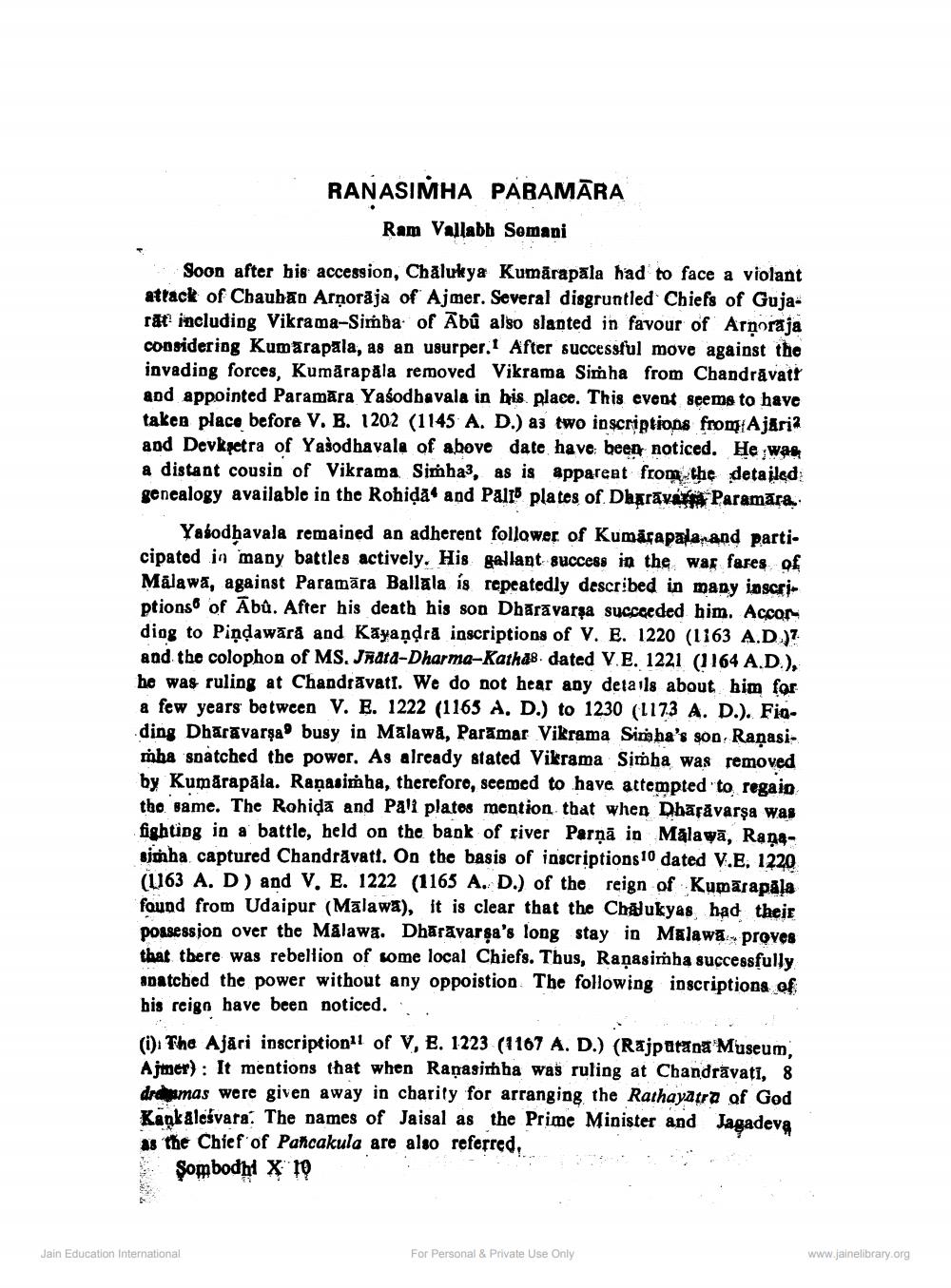________________
RANASIMHA PABAMĀRA
Ram Vallabh Semani Soon after his accession, Chalukya Kumārapāla had to face a violant attack of Chauban Arnorāja of Ajmer. Several disgruntled Chiefs of Gujaråt including Vikrama-Simba of Abû also slanted in favour of Arnoraja considering Kumarapala, as an usurper. After successful move against the invading forces, Kumärapåla removed Vikrama Simha from Chandravatt and appointed Paramāra Yasodbavala in his place. This event seems to have taken place before V. B. 1202 (1145 A. D.) az two inscriptions from Ajária and Devkpetra of Yasodhavala of above date have been noticed. He was a distant cousin of Vikrama. Simha3, as is apparent from the detailed genealogy available in the Rohida. and Palis plates of Dhxravard Paramāra.
Yabodhavala remained an adherent follower of Kumaçapalarand participated in many battles actively. His gallant success in the war fares of Mālawa, against Paramāra Ballala is repeatedly described in many inscriptions of Ābû. After his death his son Dharavarşa succeeded him. Accor diog to Piņdawārå and Kayandra inscriptions of V. E. 1220 (1163 A.D.)? and the colophon of MS. Jnata-Dharma-Kathas. dated V. E. 1221 (1164 A.D.), he was ruling at Chandrāvati. We do not hear any details about him for a few years between V. E. 1222 (1163 A, D.) to 1230 (1173 A. D.). Fig. ding Dhārāvarşa' busy in Malawi, Parāmar Vikrama Simba's son, Raņasimba spatched the power. As already stated Vikrama Simba was removed by Kumarapala. Ranasimha, therefore, seemed to have attempted to regaio the same. The Rohida and Pall plates mention that when Dhācăvarşa was fighting in a battle, held on the bank of river Parņā in Malawā, Ranasimha captured Chandravati. On the basis of inscriptions 10 dated V.E. 1220 (1163 A. D) and V. E. 1222 (1165 A. D.) of the reign of Kumarapala found from Udaipur (Malawa), it is clear that the Chukyas had their possession over the Målawa. Dhārāvarsa's long stay in Malawa, proves that there was rebellion of some local Chiefs. Thus, Ranasimha successfully spatched the power without any oppoistion. The following inscriptions of his reign have been noticed... (1). The Ajări inscriptionil of V, B. 1223 (1167 A. D.) (Rajpatana Museum, Ajmer): It mentions that when Rañasimha was ruling at Chandravati, 8 draugamas were given away in charity for arranging the Rathayatra of God Kankaleśvara. The names of Jaisal as the Prime Minister and Jagadeva as the Chief of Pancakula are also referred,
Sombodhi X 10
Jain Education International
For Personal & Private Use Only
www.jainelibrary.org




